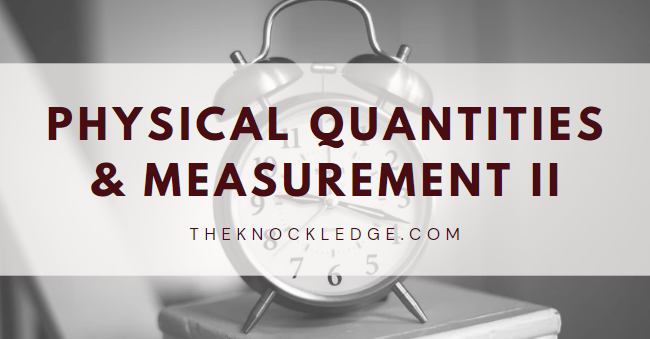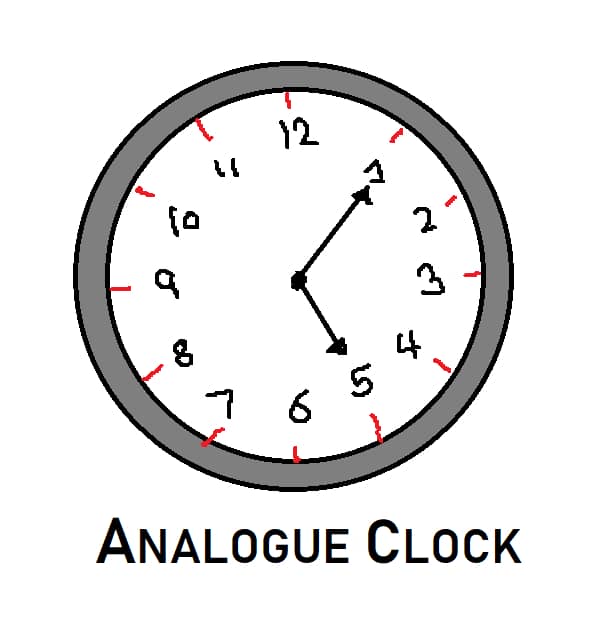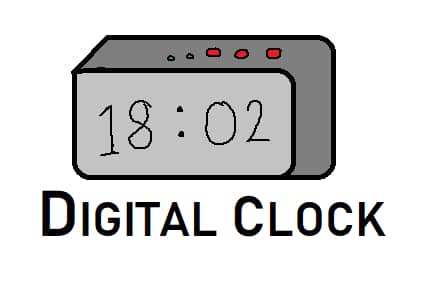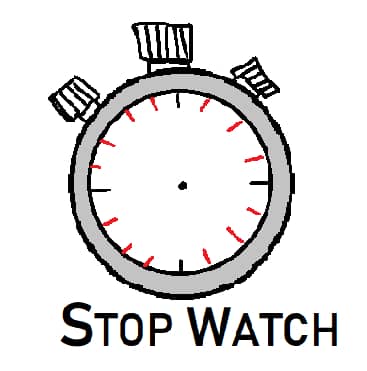Hello friends,
Welcome to the exciting world of “Physical Quantities and Measurement II” These ideas are like the foundations of science, helping us measure and understand things like length, time, weight, and temperature. They make it easier for us to grasp how the physical world works and allow us to measure things accurately in science. So, let’s explore together how they’re essential in uncovering the secrets of the universe.
Measuring Length
In simple words, length means the distance of a straight line travelling through two points. To express distance through different methods, we use length, breadth (width), depth and height. The SI unit of length is metre and we denote it by an ‘m’.
To avoid confusion in the length of a metre throughout the world, the standard metre is put between two marks on a platinum-iridium bar kept at 0 degree located at the International Bureau of Weights and Measures in Sevres near Paris in France.
Every country owns a duplicate of the original metre for correct measurements of metre ruler which they manufacture. In India, the standard metre is there at the National Physical Laboratory in Delhi.
Common devices used to measure length
Some of the common devices used to measure length are –
1. Ruler –
- Used for small measure.
- Generally, available in 15 cm (6 inches) or 30 cm (12 inches).
- A centimetre is further divided into 10 millimetres.
2. Metre Rod –
- Has a fixed length of a metre.
- It has 100 divisions, each of 1 cm (1m = 100cm).
- A centimetre has 10 millimetres.
- Generally, used by cloth merchants (tailors).
3. Measuring Tape –
- Can contain more than one metres.
- Used to measure long lengths (length of a field).
- Have a flexible movement to measure curved objects too (size of a person’s chest, circumference of a tree trunk).
How to use a ruler correctly?
Reading correct measurement using a ruler plays a very important role. So, in order to take the correct measurement from the ruler, you will have to follow these certain steps.
• Avoid using the ends of a ruler – If you use your ruler in an improper way or you use it regularly, the edges and corners of your ruler get broken and it does not give that perfect line design on your notebook. So to prevent this problem, you should not put the left edge of the object (to measured) straight at the zero mark.
• Placing the ruler correctly – For a very correct measurement of your object, you should keep the ruler exactly parallel to the object and keep it as near as possible.
• Correct positioning of eyes – Correct positioning of eyes while measurement matters a lot. Whenever you are doing measurement with a ruler, you should always keep your eyes vertically and horizontally straight in line with the mark you are reading. Parallax error is the error which can be made while reading the measurement using a ruler.
Indirect Measurement of Length by Using a Ruler
To measure a curved or designed line using a ruler, you can do the following steps and you will definitely get the correct measurement.
- Fetch a piece of thread.
- Put the thread along the whole line and cut it wherever it ends.
- Take a ruler and put the thread parallel to its marking.
- Measure the length of the thread using the ruler.
- The measured value of the curved line will be displayed.
Also read:
Measuring Mass
The amount of matter (solid, liquid, gas) present in the object is mass. The SI Unit of mass is ‘Kilogram (Kg)’. Generally, we don’t use the word mass in our daily life. Instead, we use the word weight. Suppose, if you purchase 3 kg of potatoes from a vegetable vendor then actually you are purchasing 3 kg mass of the potatoes.
The very common submultiples of mass are gram (g) and milligram (mg). We use these submultiples of mass to measure smaller quantities whereas, and quintal and metric ton to measure very big quantities.
Devices Used to Measure Mass
People have developed several devices to measure mass till date. Beam Balance/Grocer’s Balance, Electronic Weighing Machine and Physical Balance are some of the common devices for the same. Let’s move into deep detailed version of these devices.
1. Beam Balance (tarazu)
This is the simplest type of instrument which we can use to measure mass. Let’s see the structure of the beam balance:
- We take the standard weights as a fixed quantity and the compare the unknown quantity with it.
- Beam balance has a straight metal beam which is generally of iron.
- Iron rod is supported with an iron loop in the centre.
- There is a pointer between the iron loop.
- We hang two identical pans from the two ends of the rod equally.
- Both the pans are equal in their length and mass so that we don’t get a wrong weight.
- Object (whose mass has to be calculated) is generally put on the right pan.
- After that, we put the standard weights on the left pan.
- Then, we put these fixed units in an increasing way on the pan till the metallic beam turns horizontal and the pointer becomes vertical.
- At last, we take out the sum of the standard weights and calculate the mass of the object.
*One thing in notice that, when both the pans are empty, the metallic beam should be horizontal and the pointer should be vertical.
2. Common type of beam balance
- No beam is present but a pointer is there.
- The pointer moves whether right side or the left side in a rainbow shape according to the weight put on it.
- So, if we compare this version with the traditional beam balance then we can say that if the pointer becomes vertical in this digital version then it means that both the pans have equal mass.
3. Electronic Weighing Machine
4. Physical Balance
Measuring Time (Physical Quantities & Measurement II)
Devices for time measurement
1. Sundial
2. Sand Clock
3. Analogue Clock
4. Digital Clock
Time Intervals
24-hour Clock System
Main Features
- The use of a.m. and p.m. in the timings is not there to avoid confusion.
- We show the time by displaying 4 specific digits. The first two digits show the number of hours and the next two digits show the number of minutes.
- We divide the hours and minutes by a colon (:) in 2 pairs of 2 digits.
- Time continuously passes one number by number without any repetition.
- The time 00:00 and 24:00 are both same.
Also read:
MEASURING AREA
The amount of surface enclosed within the boundaries of a plane (closed) figure is called its area. One square metre (m2) is the area of a square whose each side is 1 metre in length (1m 1m = 1m2).
The table below shows the formulas of finding area of some shapes:
| Shape | Formula of area |
| SQUARE | Side × Side |
| RECTANGLE | Length × Breadth |
| TRIANGLE | 1/2 × Base × Height |
| CIRCLE | π × r × r |
How can you find the AREA OF IRREGULAR SHAPES?
Activity
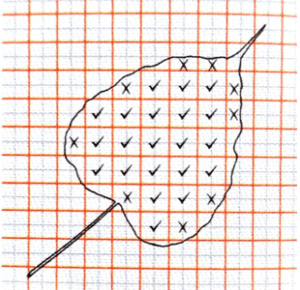
Aim: To measure the area of an irregularly-shaped leaf using a graph paper
Materials required: An irregular leaf, a graph paper and a pencil
Procedure: Place the leaf on the graph paper and trace its outline with the help of a pencil. Remove the leaf. Now count the number of complete squares within the outline and draw a ✔ on those boxes. Also count the number of incomplete squares that are half or more than half within the outline and draw a ❌ on those boxes. Ignore the number of squares that are less than half.
Observation: The area of the leaf
= (Number of complete squares) cm2 + (Number of half or more-than-half squares) cm2
= 21 cm2 + 9 cm2 = 30 cm2
Conclusion: The area of an irregular shape can be measured by using a graph paper.
MEASURING VOLUME
When you fill a glass with juice, the juice occupies a certain amount of space in the glass. This space represents the volume of juice is the glass. The total space occupied by an object is called its volume.
MEASURING THE VOLUME OF SOLIDS
The volume of a solid figure is the total amount of space enclosed by it. Each unit of space in a solid figure is taken as a unit cube. A unit cube is a cube, the sides of which are of 1 unit in length. The volume of a unit cube is 1 cubic unit or unit volume. Imagine a brick made of number of unit cubes. So the volume of all the unit cubes together makes up the volume of the brick.
Instead of counting cubes, you can also apply a formula to calculate the volume of a regular solid. The given table shows the formula of volume of some regular solids:
| Solid | Volume |
| CUBE | Side × Side × Side |
| CUBOID | Length × Breadth × Height |
| SPHERE | 4/3 × π × r^3 |
UNITS OF VOLUME
The SI unit of length is metre. So, the SI unit of volume is: metre × metre × metre = metre^3 or m^3 (cubic metre). The volume of smaller solids is generally measured in (cubic centimetre). This is also written as cc.
1 m^3 = 1 m × 1 m × 1 m = 100 cm × 100 cm × 100 cm = 10,00,000 cm^3
MEASURING THE VOLUME OF LIQUIDS
Liquids do not have a fixed shape. They take the shape of the container they are kept in. The maximum volume of a liquid that a container can hold is known as its capacity. Capacity and volume have the same units.
The volume of a liquid is usually measured in litres (L) and millilitres (mL). It is measured using measuring cans that vary in shapes and sizes. These measuring cans are available from 50 mL to 5 L.

But, measuring cans have a specified value. Thus, they are used for commercial purposes and not for daily-life measurements. E.g. a measuring can having a measure of 1L cannot be used by a milkman to measure 200 mL milk. Precisely, these measuring cans do not have graduations (markings) on their outer wall.

